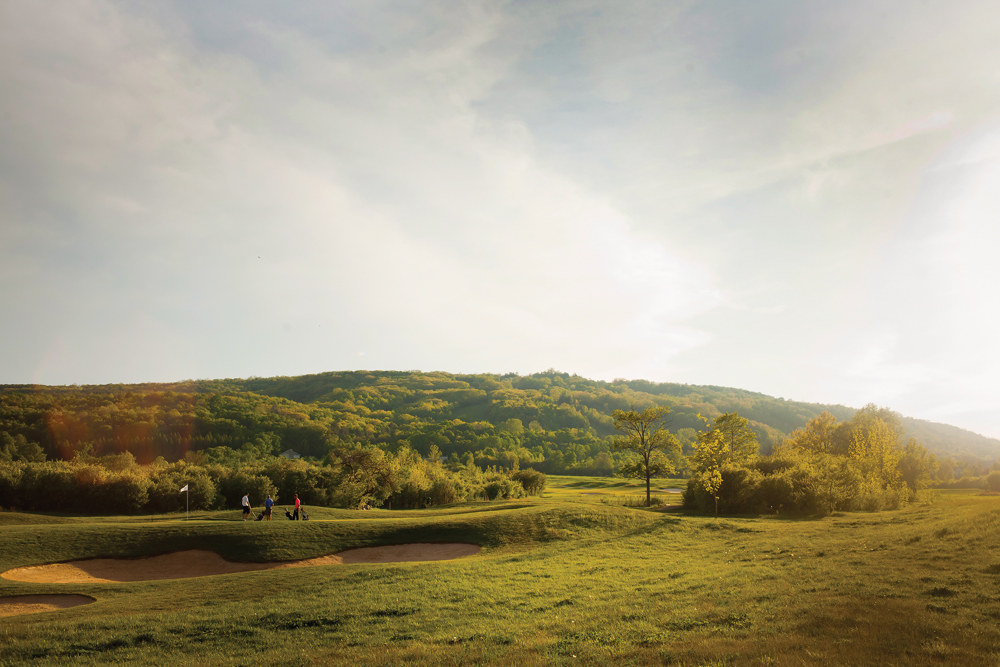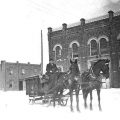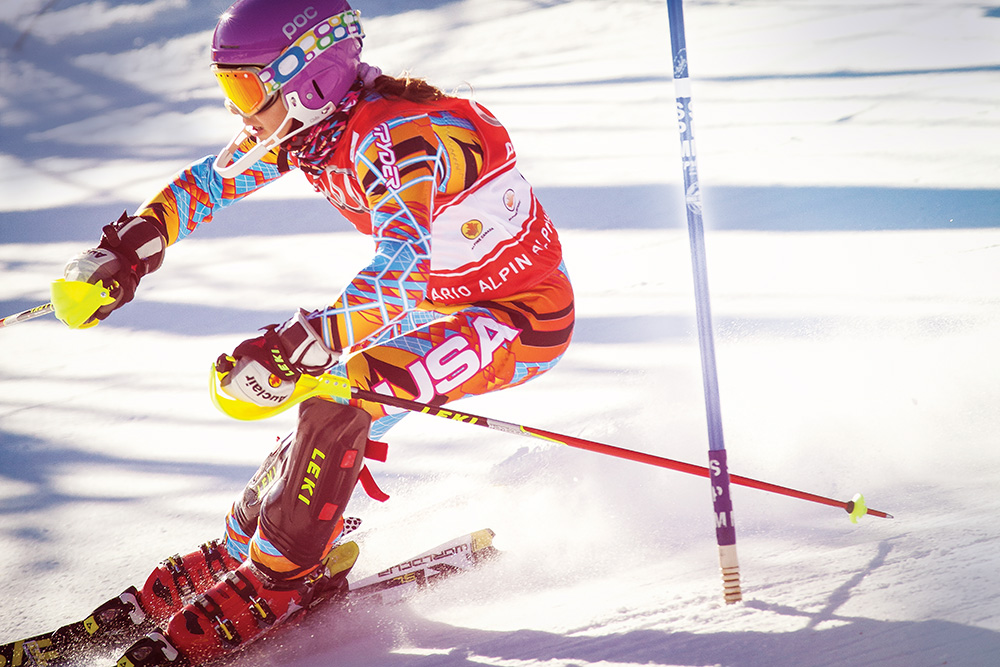While rinks elsewhere are shrinking or closing down, the Collingwood Curling Club hosts one of the hottest games in town.
by Geoff Taylor // Photography by Ian Donaldson
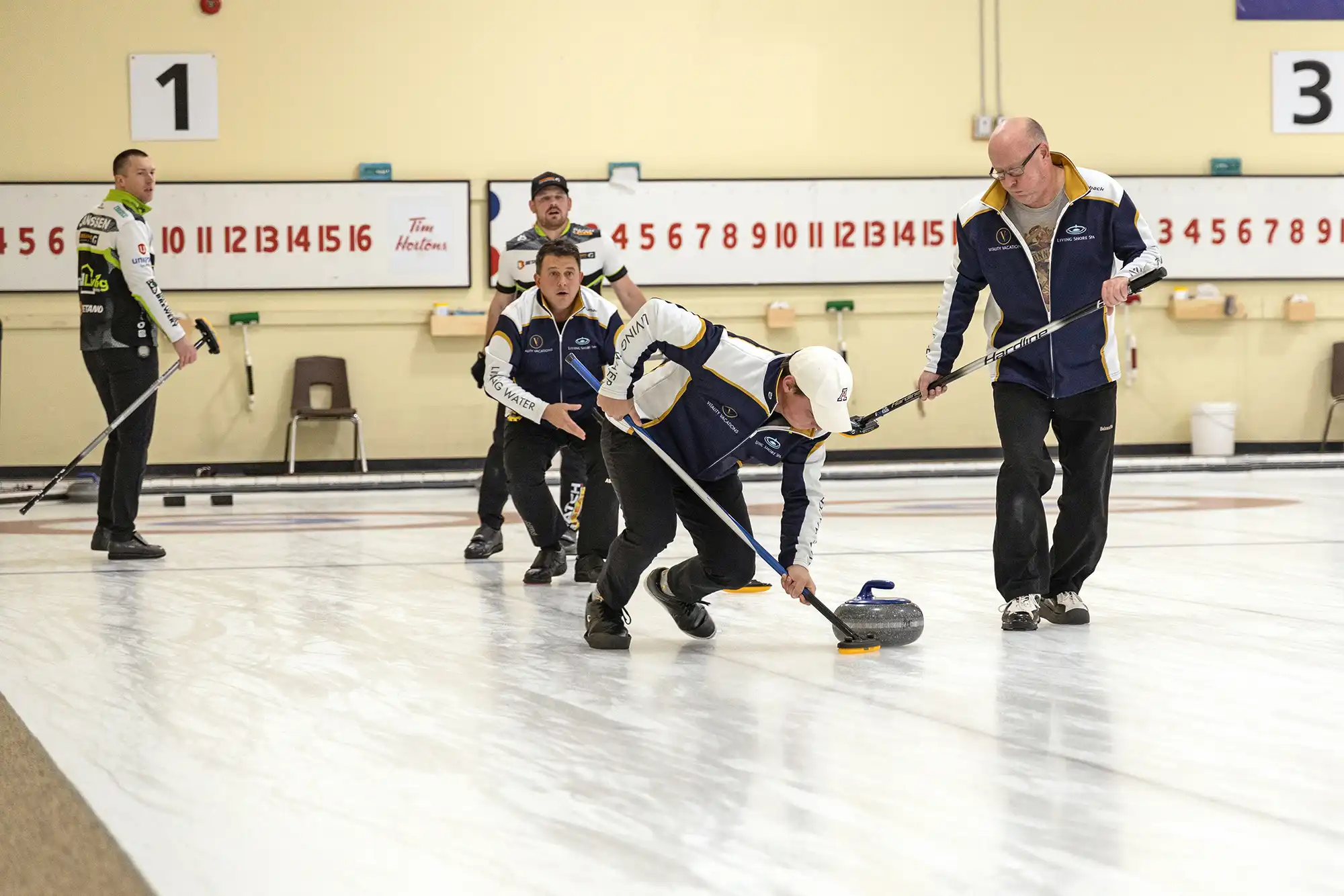
For those who don’t see curling as a real sport, who question the athletic integrity of the game, let’s get this out of the way first. Imagine doing lunges on ice in slippery shoes holding a 44-pound granite stone you are trying to park on a dime 120 feet away. Sweeping a rock the length of the ice leaves you breathless. Muscles you didn’t even know existed scream the morning after playing eight ends. While nobody is measuring your percentage of body fat, it’s all about flexibility, stamina, balance and core strength. If it was easy, they’d call it hockey. Try it. Enough said.
While many curling clubs across the country are struggling or have closed recently—Scarborough, Weston, Goderich and Guelph, to name a few in this province—the Collingwood Curling Club (CCC) has created a vibrant, welcoming organization with a thriving membership and one of the busiest rinks in Ontario. What gives? Why is curling so sexy in Collingwood?
History is part of the reason. Since the early settlers cleared ice on Georgian Bay, curling has been a focus of Collingwood winter activities. Pioneers brought the ancient game from the Scottish Highlands. In 1881, an official organization was founded making the CCC one of the oldest institutions in town. After a number of near death experiences over 143 years, the CCC is thriving with new members filling the roster to record levels.
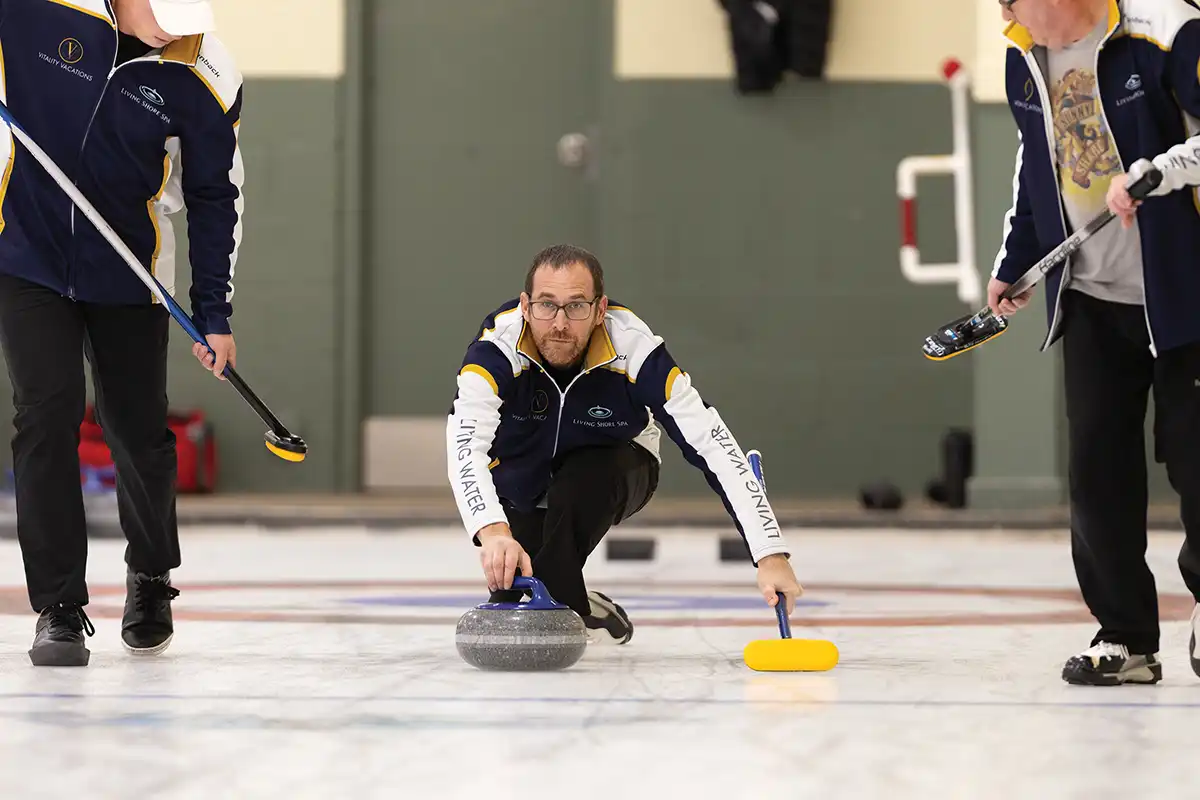
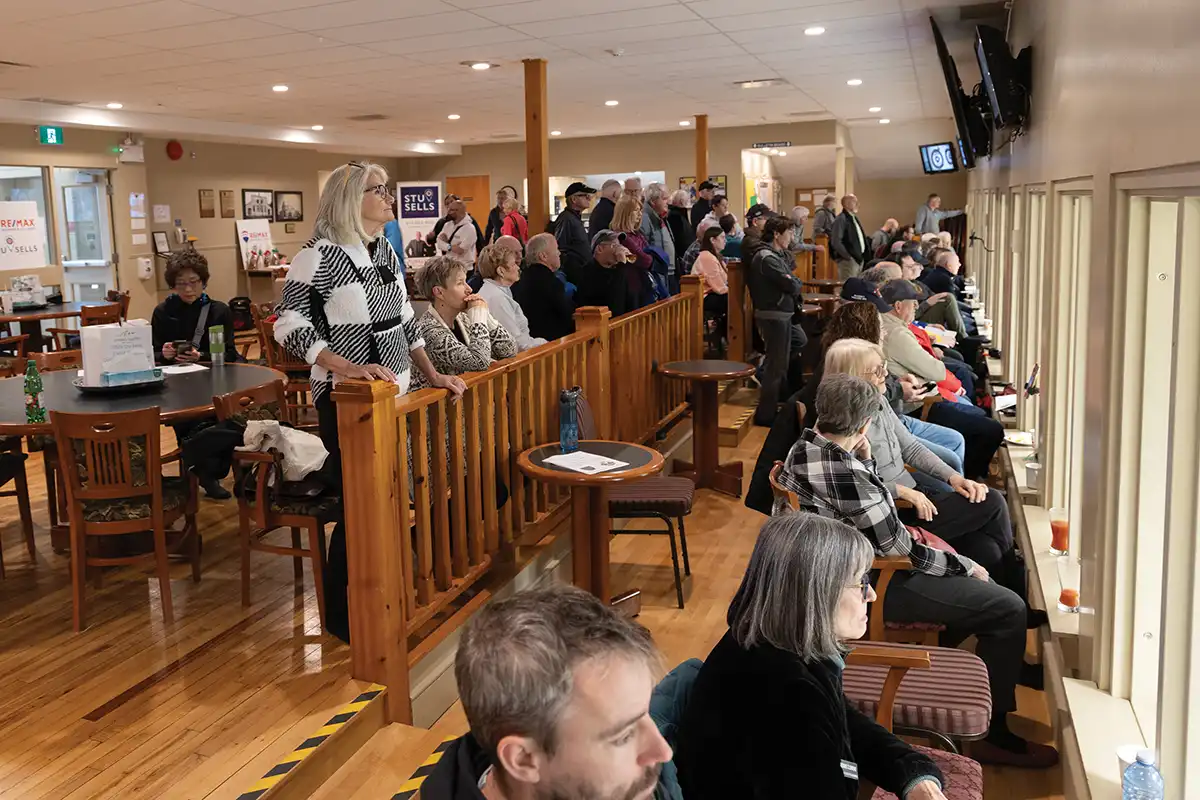
Collingwood’s first indoor curling rink was built in a barn on Pine Street with natural ice in 1898 where the CCC played until 1949. The current building (beside the YMCA) had been the town hockey rink for 40 years until the Collingwood Community Arena opened. Used as an armoury during the First World War, training trenches were dug on the building’s grounds to train soldiers in modern warfare. Names carved by First World War soldiers into the bricks on the east wall of the building are still there today.
After years of neglect, the structure was nearly condemned. In 1992, a Collingwood parks report recommended the building be closed and replaced with a new facility. My grandmother left the club because it was so dilapidated. An editorial in The Enterprise-Bulletin summarized, “The curling rink should be demolished before somebody gets hurt.” The 1990s witnessed a steep decline in membership. By 1999 the club had only 79 members and was on the verge of closing.
“The club could host a provincial championship. Ice was fantastic all weekend. Very consistent and great speed.”
Ontario Champion John Epping.
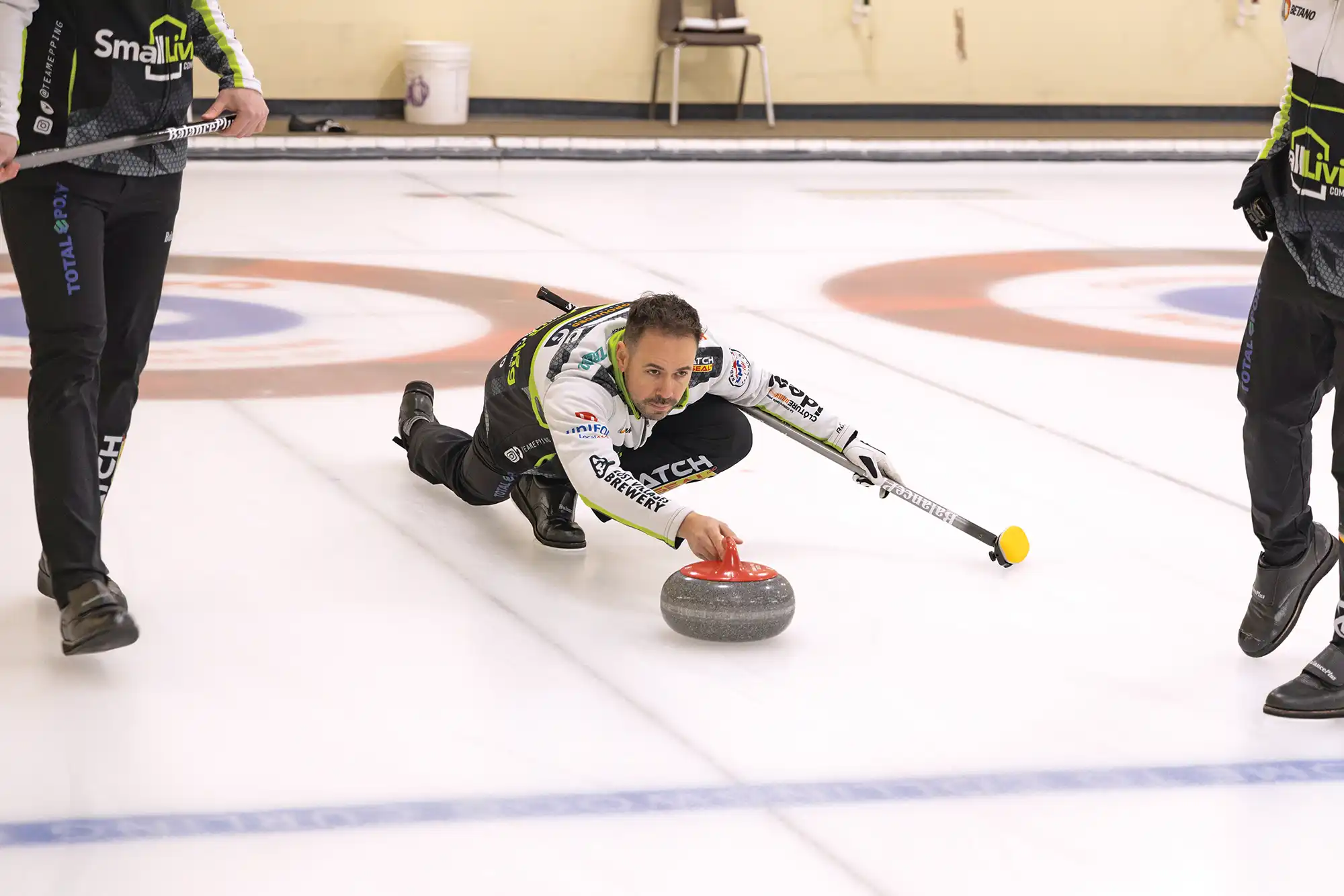
Bold decisions by the club’s board led to the revitalization of the CCC around the turn of this century. Investments were made to renovate and modernize the facility. Marketing initiatives were taken to attract the newly arriving retirees to the game. A comfortable lounge was built. “Jitney sessions” (pickup curling) were introduced, successfully giving novices a chance to try the game without feeling competitive pressure and providing flexibility in scheduling.
Changing demographics in Collingwood have also helped raise interest in the club. Curling is a lifetime sport. Seventy-seven percent of members are over 60. But the last few years have seen a surge in younger players. When asked what members love about the club, a common answer is the inclusivity. Curling is an egalitarian sport. Men and women compete with and against each other. It is a game you can play for life.
Today, the CCC is one of the busiest rinks in the province with 42 draws (sessions) a week as well as school programs, bonspiels, Special Olympics and wheelchair curling. There are 615 full-time members ranging in age from nine into their nineties. Decades melt away as generations compete against each other. Any number of grandmothers at the club can take you apart and eat your lunch—all with a smile on their face and a twinkle in their eye.
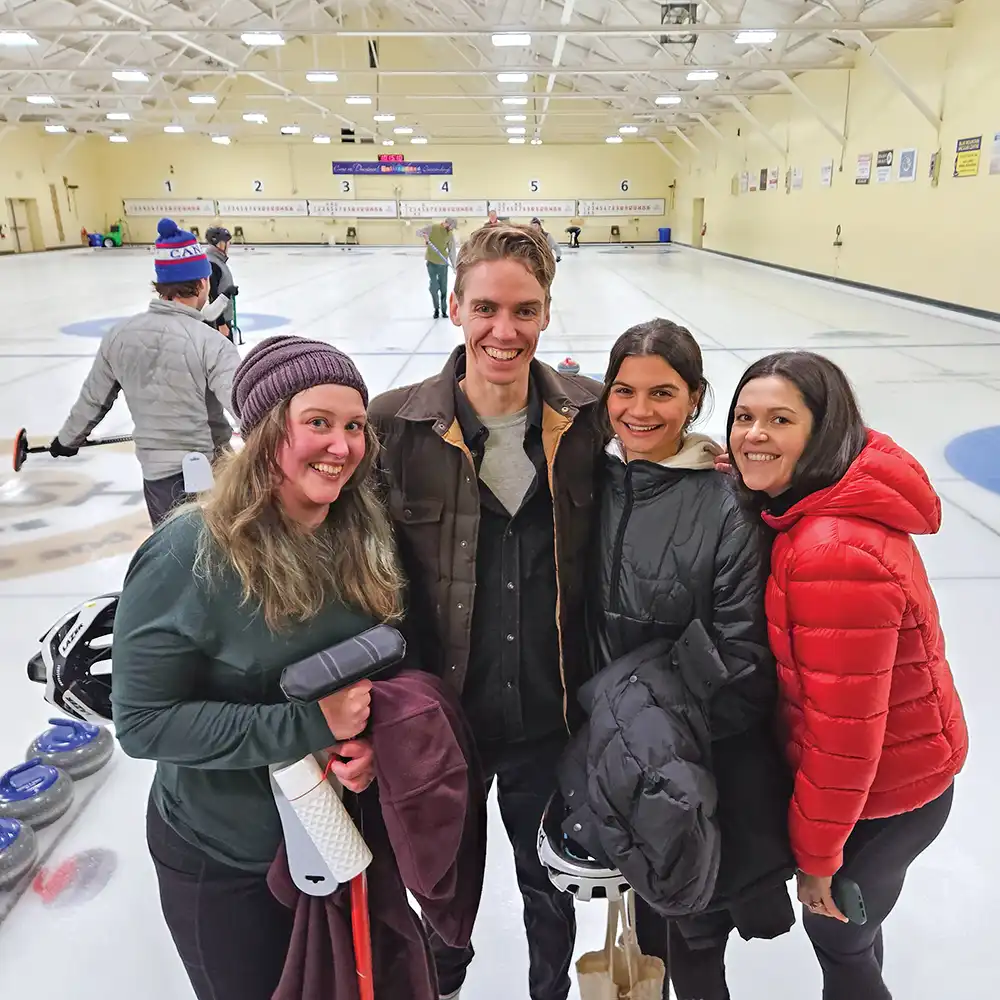
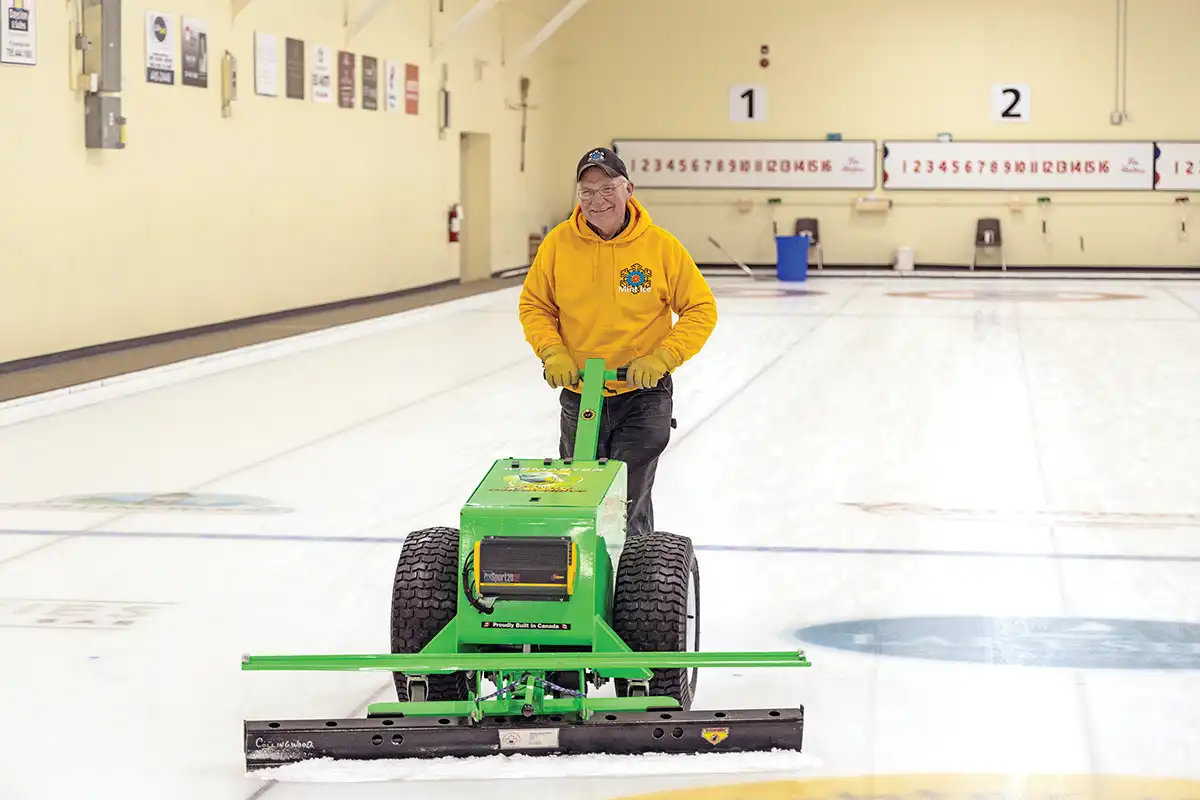
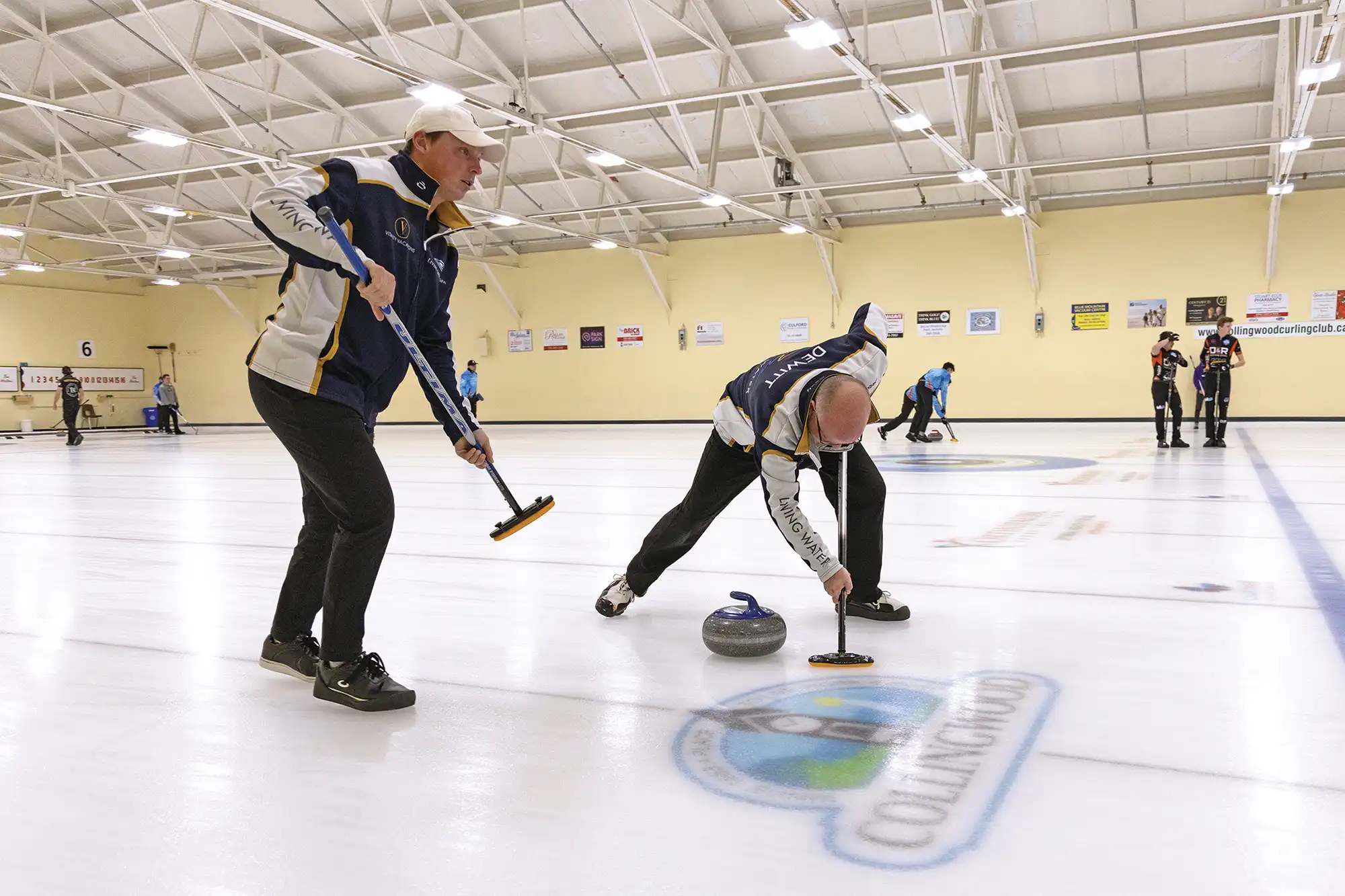
Stick curling allows for those with knee and back issues to play. Wheelchair curlers are integrated. The financial barrier to the sport is low. Gear (shoes and a broom, plus helmets are highly recommended) is inexpensive. An annual CCC membership fee of $395 allows you to curl as often as you want. Six area elementary schools send students on Friday mornings who are coached in the game by club volunteers. Eight- to eighteen-year-olds receive instructional lessons on Sundays for free. Well over 1,000 players a year experience curling at the club.
For over a decade, Learn To Curl programs have introduced players to the sport. For many members, this is the gateway to the game. This fall, 50 novices enrolled to learn curling skills and rules. A dozen volunteer club coaches provided simple and clear instruction over six hours. Ongoing training and skill-building at all levels is available through the season.
Not enough can be said about the unique culture of the sport. Players are competitive without being pugnacious. Games begin and end with fist bumps all around and a genuine intention of “good curling.” Once off the ice, opposing teams sit down together in the comfortable lounge with a round of drinks on the winning teams. There’s laughter and friendly debate, such as where to go in Collingwood for the best coffee or chicken wings.
Looking for a good mechanic or electrician? A physiotherapist or osteopath? Recommendations are freely shared. Plans are hatched. Discussions about the best bike routes and hiking trails are detailed and lengthy.
Curlers are “doers,” involved in all aspects of our community. The CCC itself is an organization of volunteers who give back to the Club, and the culture created by enthusiastic volunteers fosters in members a sense of ownership and great pride. For six months each year, the CCC is a lively social hub, hosting live music, potlucks, pub nights and euchre tournaments.
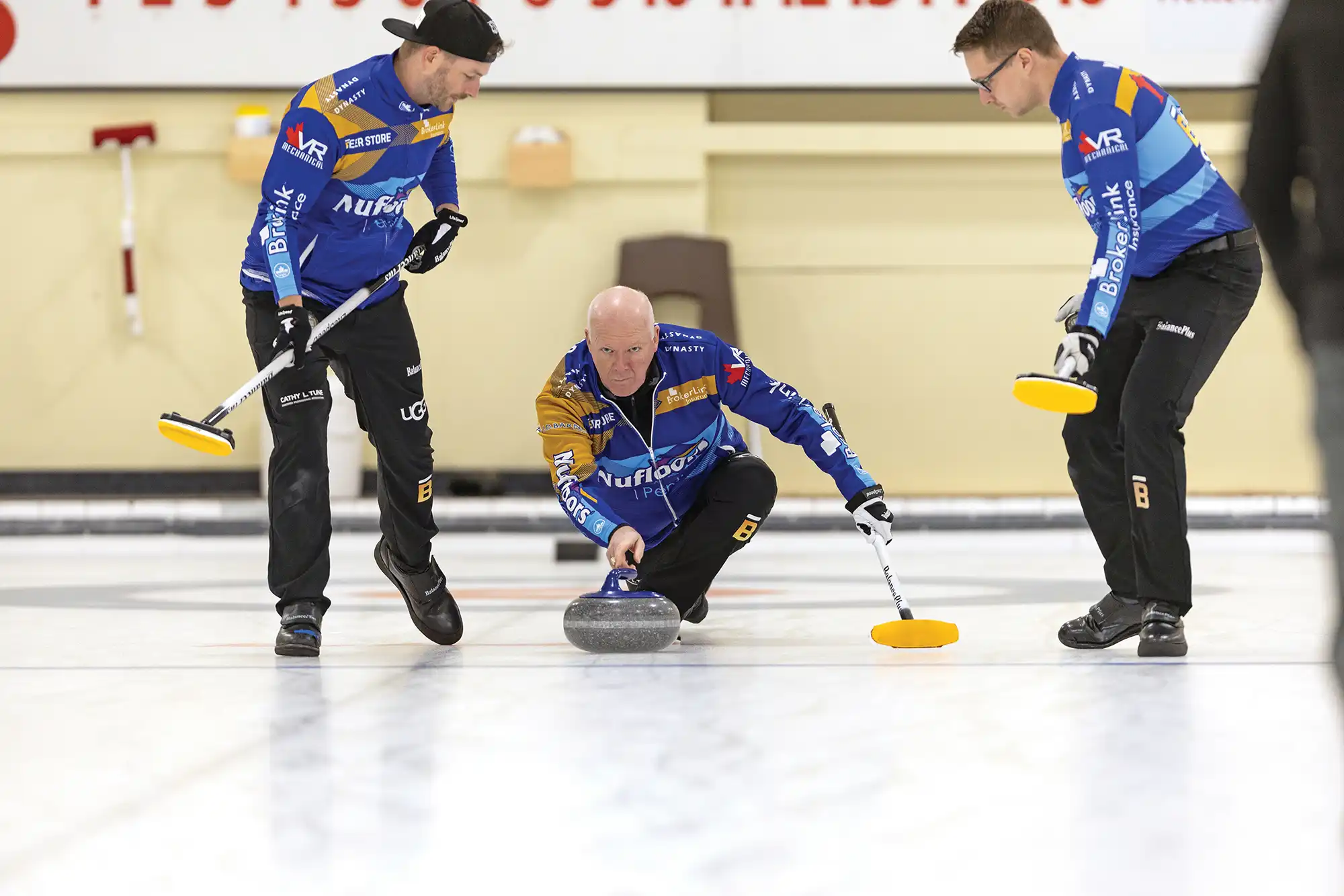
There is magic in the ice. Physicists cannot agree on why curling stones curl. A curling sheet is not smooth but pebbled. Furious sweeping in front of a thrown rock warms the ice, reduces the friction and keeps the stone’s trajectory longer and straighter. An unswept stone will curve five to six feet. Scientists cannot explain why; but curlers see it happen. Teams confer about how the swing of the ice changes from end to end and alter strategy.
A rink is only as good as its ice maker. “The Collingwood Curling Club has better ice than any facility in Canada,” claims Eldie Benson, CCC’s head ice technician. With national and international experience, Benson has made curling ice in every province of the country and worked at the Scotties, Brier and the World Curling Championships.
In charge of the ice making operations in Collingwood for 17 years, Benson describes his craft as a combination of physics and chemistry. There are 19 probes inside and outside the building regulating conditions. “We anticipate changes and adjust the rink’s temperature and humidity to maintain consistent conditions over a six-month season.”
Although the past was touch-and-go, the CCC’s future is strong. The club has an excellent relationship with the Town of Collingwood and has taken a long-term approach investing in the facility. Future challenges include managing the demands of success. Equipment is upgraded before it wears out. The club is too busy to afford a breakdown.
The club spent $100,000 on new stones in 2020, an investment that will last for the next generations of avid curlers in our community.







